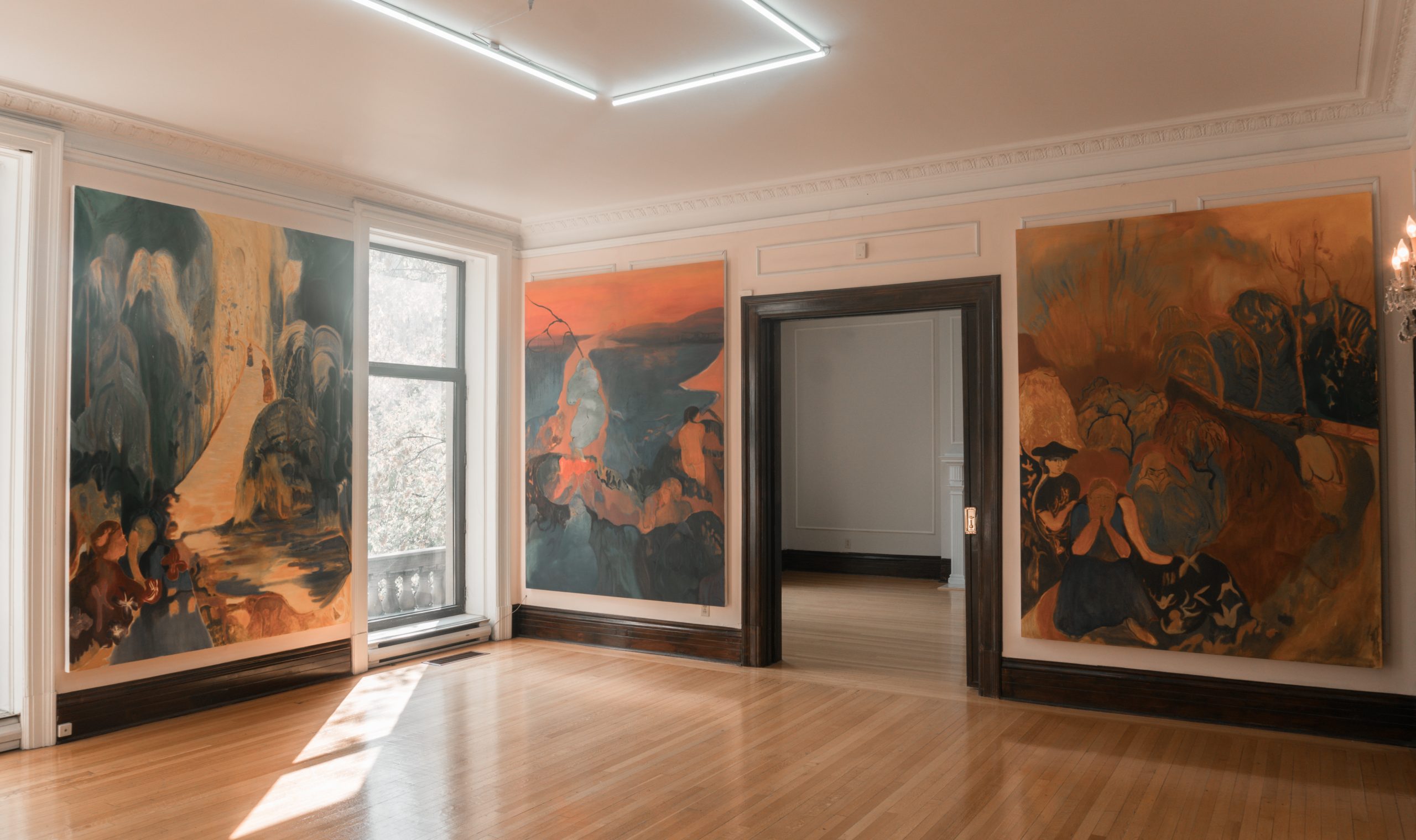A trip into Darby Milbrath’s daydream
The paintings might remind you of a place that you have already visited in your dreams, or maybe an image you have already imagined while daydreaming, perhaps on the road or in nature.
Although the wind is held at Galerie Pangée at 1305 Pine Ave. West. The exhibition takes you into Darby Milbrath’s imaginary world, where the public can feel a sense of comfort while admiring the paintings.
Milbrath is a Toronto-based artist that has exhibited her work nationally and internationally. In Although the wind, the oil paintings evoke a sense of nostalgia. In her works, viewers can admire imaginative landscapes and perceive a few figures in some of them.
Her paintings evoke memories of her childhood, when she spent most of her time with her sisters. Some of the pieces portray the landscape of the West Coast Gulf Islands, a group of islands in British Columbia, where she was raised.
“The paintings are memories of sacred places I’ve been to or grown up near, on the island, surrounded by the sea,” said Milbrath.
Last summer, Milbrath lived on a farm on the west coast, on a small gulf island where she had time to work on her paintings. There, Milbrath was able to remember the times she spent on the island with her sisters. The smell of the fields and the images of the landscapes are part of her souvenirs.
At the exhibition, the works are displayed in three rooms; the big canvases are mostly together in one room, and the small and medium paintings are exhibited together in the next rooms of the gallery.
In the main room, an extraordinary painting can be noticed on the back wall: Starry Sky Over the Archipelago. It depicts a starry night with the moon shining in a dark blue sky. One could have the impression that the painting is moving. This sense of movement in her work is rooted to her background as a professional contemporary dancer. The artwork seems to project the tranquility of the night through various shades of blue. It is very dreamy.
Canvases such as Still Life with Apples and Still Life with Melons were painted with warm colors and contrasted by a dark blue background, emphasizing the fruits. The paintings depict inspiration that she takes from nature.
The Path is displayed between two long windows, which gives viewers the impression that there are three windows showing a mountain. At the bottom left of the canvas, there seems to be two women talking, surrounded by nature. Trees line a long path that looks enlightened by the light of the day. The road seems to lead the way to an unknown place, giving a sense of mystery and magic.
“This is where the magic emanates from and where I long to be, where I imagine I am if I’m not,” said Milbrath.
Although the wind is in reference to Izumi Shikibu’s poem “Although the wind…” from The Ink Dark Moon, translated by Jane Hirshfield and Mariko Aratani. The poem was recited to Milbrath by an old woman who owned the farm. The poem resonated well with her works in which she explores the concept of hope in darkness.
“She recited the poem to me about the moonlight and the ruined house and I thought about the barn,” said Milbrath. “How the wind howled through. How dying animals would find their way between the crooked planks to die in shelter.”
Although the wind is open to the public each week from Wednesday to Saturday until Oct. 31 from 12 p.m. to 5 p.m. or by appointment at 1305 Pine Ave. West. The exhibition is also available for viewing online.
Photos by Kit Mergaert.
